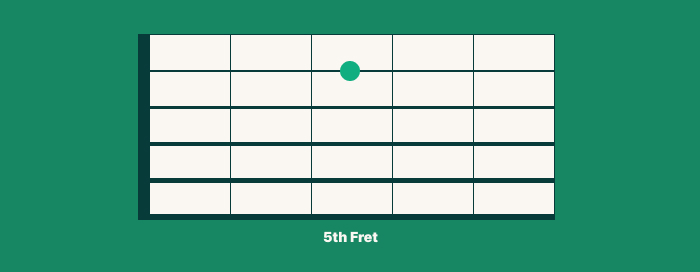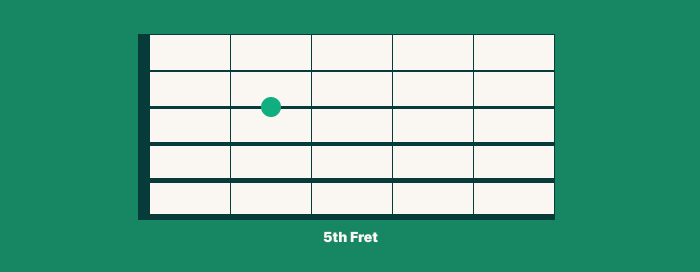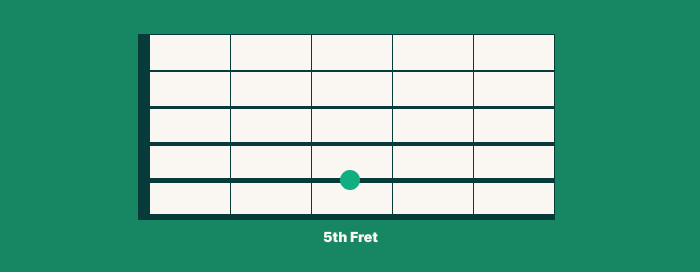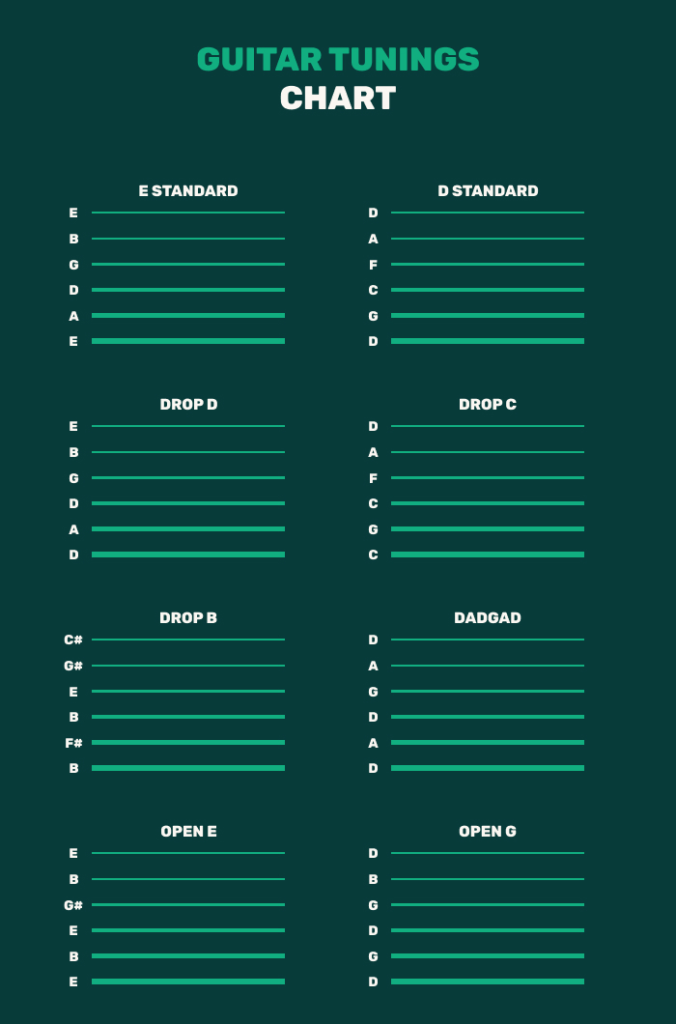It’s an excellent skill when you know how to tune a guitar without a tuner but many guitar players don’t know how to do it.
Of course, you can use tuner pedals or apps to tune guitars or other instruments. But what if you don’t have any of them and want to tune your guitar?
In this case, you need to know how to tune a guitar by ear. But not everybody has a perfect pitch.
And that’s what this post is about. I want to explain how to tune guitars without tuners when you don’t have a perfect pitch.
Tuning a guitar by ear and not using any tuner app might sound difficult but in reality, it’s very easy. It’s called The Fifth Fret Method.
Tune A Guitar Without A Tuner In 6 Steps
This guide about tuning a guitar by ear is for six-string guitars but the same method works for extended-range guitars such as seven or eight-string guitars. Also, you can tune bass guitars the same way.
1. Use A Reference Note
The first step when tuning a guitar by ear is to tune the first string because all other strings are tuned based on the first string.
The most popular guitar tuning is standard E (E A D G B E) where the note of the first string is E. So, you need to tune your guitar’s first string to E.
But when you don’t have a perfect pitch you don’t know what E sounds like. But if you have a relative pitch, you can use a reference note and that’s what we should do too.
You need to use a reference note for the first string when tuning a guitar by ear. For reference note, you can use anything like a piano, another guitar, bass, or just a sound which is E.
Just play that E-note and tune your guitar’s first string while listening to the reference note. You can find the reference E note on Google or Youtube too.
Make sure to tune it perfectly. The reference note and the first string must be the same. Also, the guitar will stay in tune if you use good guitar strings.
2. Tune The 2nd String
After you tune the first string of the guitar to E, it’s time to tune the second note. And you will do it exactly the same way as in step one but this time the reference note will be the first string.
To do it, fret the fifth fret on the second string and play both – the open first and fretted second strings.

The note on the open second string is the B and when you fret the fifth fret, the note becomes E. So, when you play the open first and fretted second string together, they must sound the same.
Play both strings together and also one at a time to see the difference and make sure that both strings are perfectly in tune.
3. Tune The 3rd String
Next is the third string and the method is the same. You need to fret the third string and play it with the open second string. But there is a small difference.
This time instead of fretting the fifth fret, you need to fret the fourth fret on the third string of the guitar. That’s how guitar tuning works.

Like in the previous step, play both strings together and separately for maximum clarity and accuracy.
4. Tune The 4th String
Now it’s time to tune the fourth string and it’s tuned in the same way as the second string. But you use the third string as a reference note.
Fret the fifth fret on the fourth string and play it with the open third string. The note of the open third string is the G. So, the fretted fourth string on the guitar is G too.

Sometimes, the third guitar string may go out of tune and you need to retune it. So, make sure it is tuned correctly when tuning the fourth guitar string.
5. Tune The 5th String
As you guess to tune the next string you need to do the same step. But before you do it, make sure that all the previous strings are in tune,
This time you need to play open fourth and fretted fifth string. You fret the fifth string on the fifth fret and both strings become the note D.

Play both strings together or separately. This way you will notice if there is some dissonance.
6. Tune The 6th String
And it’s time to tune the last string on our guitar. The sixth string on the guitar is E and you can tune it in two different ways.
The first way is to fret it on the fifth fret which should be A and play it with an open fifth string which is also A.

Another way is to tune it with the first string. On the six-string guitar, open first and six strings are E. So, as long as you have your first string in tune, you can play them together and tune the sixth string that way.
Alternative Guitar Tunings
Now you understand how to tune a guitar by ear which is not a hard thing to do. Guitar tuners are great but having the ability to tune a guitar without tuners is a great skill.
But what about alternate tunings? Can you tuner the guitar in alternate tunings without tuners? Yes, you can.
There are many alternate tunings for a guitar that are used in different genres. For example, metal guitar players like to tune their guitars in drop tunings such as drop D, drop C, etc.
Also, there are open tunings such as open G which is used in blues or country music. And you can tune your guitar down a half step or whole step.
If you are interested in alternate guitar tunings you will find the guide on how to tune guitars in popular alternate tunings below.

How To Tune A Guitar Down A Half Step
To tune a guitar down a half step you need to tune each string down half a step. So, the standard E becomes standard Eb (Eb Ab Db Gb Bb Eb)
How To Tune A Guitar Down A Whole Step
Tuning a guitar down a whole step means when you tune standard E to standard D (D G C F A D). So, you need to tune each string down a whole step.
How To Tune A Guitar In Drop D
To tune a guitar in drop D the only thing you need to do is to tune a guitar in standard E but tune the sixth string down a whole step so it becomes D instead of E.
How To Tune A Guitar In Drop C
Tuning guitars in drop C is similar to drop D. But you need to tune a guitar in standard D and tune the sixth string to C, which is a whole step down.
Conclusion
To tune a guitar without a tuner is a great skill to have and it’s not a hard thing to do. If you have a perfect pitch it’s very easy but for the rest of us, we just need to use the reference note and then tune a guitar with the Fifth String Method. This method works with any guitar and also for bass guitars.
